Salted earth at the tail of the Rio Grande’s snowmelt
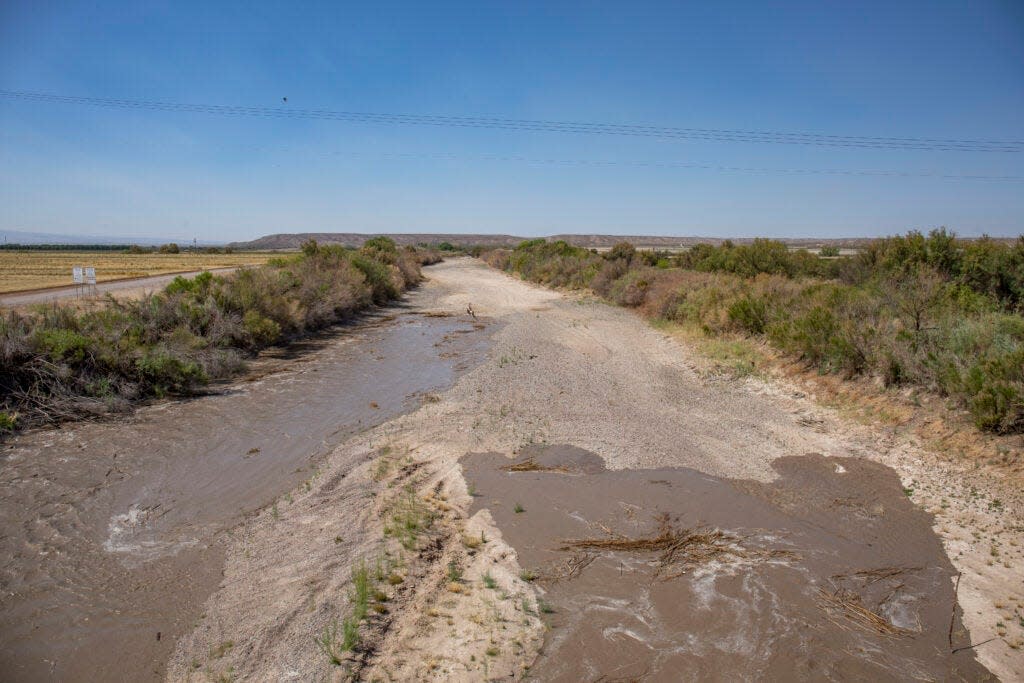
This story was originally published by Source New Mexico.
EL PASO, Texas - The Rio Grande is strictly managed, apportioned and allocated beneath Elephant Butte Dam as it makes its way to Texas.
Only when the dam is open does the water travel through El Paso, ferried in concrete-lined straight channels to Mexico’s reservoirs or to irrigation ditches downstream. The flows travel, sometimes spreading in glassy sheets under pecan orchards or past fallowed cotton fields.
The river stretches into Hudspeth County, Texas. There, water evaporates under a scorching sun and seeps into the soil. Salt beads like pearls in a cracked riverbed, invasive saltcedar is a thick wall on the bank — this is the Forgotten Reach of the Rio Grande. And this is where the snowmelt ends.
About 300 miles downstream, tributaries like the Pecos River and the Rio Conchas push into the riverbed, reforming a river. But in all except the wettest years, the river remains disconnected.
The U.S. Bureau of Reclamation turns the river on and shuts it off, like a great spigot, to provide irrigation water to New Mexicans and Texans. In years past, it would flow starting in March and April through the early autumn. For the past two deep drought years, flows rushing from the edge of the Caballo Reservoir only lasted a few months. In 2022, the river here ran for 12 weeks, from June 3 to Aug. 24.
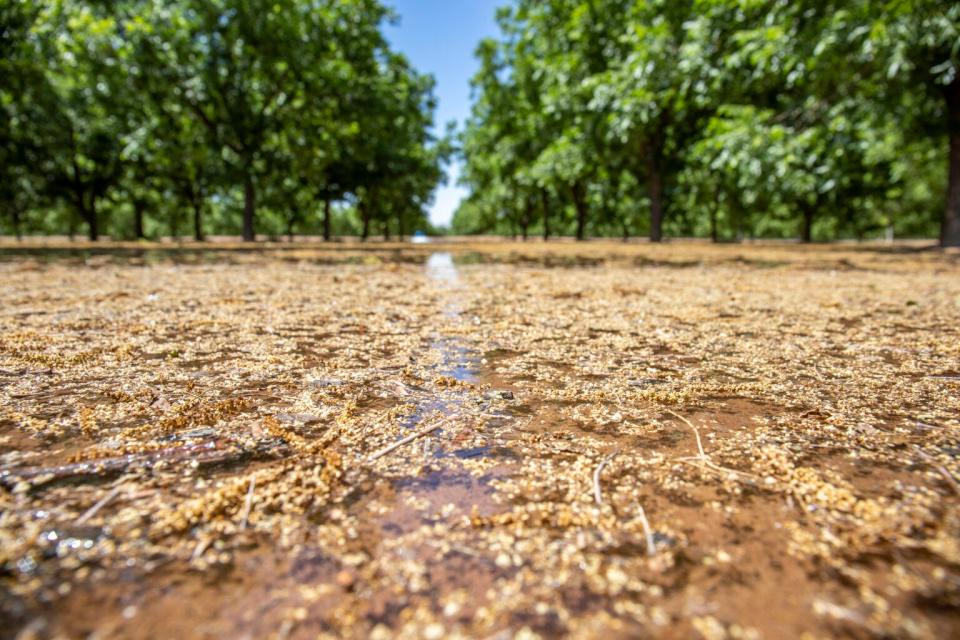
Through a quarter century of drought, regional cities and farmers have relied on pumping more from the ground. The shared aquifer between El Paso and Ciudad Juárez, the Hueco Bolson, has a dwindling layer of fresh water at the top and increasingly salty layers of water deeper down. Individual wells vary in how salty — or brackish — the groundwater is.
“The ecosystem is dying because of salt,” said Girisha Ganjegunte, a soil scientist at Texas A&M Agrilife Extension in El Paso.
There is a significant push to restore a small refuge of wetlands, rejuvenating a river out of memory, but even that work faces an uphill challenge as the already warmer climate takes its toll.
The dream of a garden in the desert
In 1916, an October Roswell Daily Record story celebrated Elephant Butte Dam, saying “these life-giving waters” will provide “moisture for the crop-growing season, thus causing the desert below to blossom and bear fruitage.”
Built by the newly tasked Bureau of Reclamation the year before to support irrigation and transport of water to Mexico, the Elephant Butte Dam drastically changed the river’s hydrology, stopping the seasonal flooding that drove the patterns of the Rio Grande.
In recent decades, with less water making its way into the streambed and hotter temperatures spiking evaporation rates at the dam, the reservoir shrunk to a fraction of its capacity, the promise to create a garden in the desert unfulfilled.
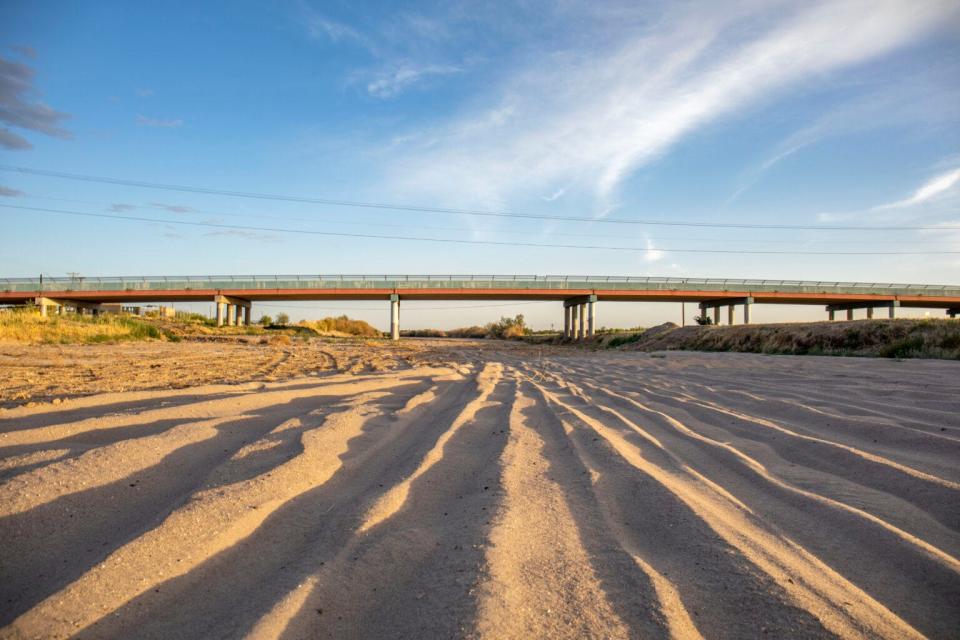
Models from a 2020 study predict the Elephant Butte-Caballo reservoir system “will become a much less reliable water source in the future,” pushing people to groundwater use, which could deplete fresh groundwater in the El Paso region within the century.
With less water than before, regional farmlands in Texas transformed. Farmers shifted away from growing chile to cotton and pecans. They cut back on irrigated lands, or skipped planting crops during drought, said Orlando Flores, an extension agent with the Texas A&M office in El Paso.
Pima cotton, which in good years can account for 20,000 acres in El Paso County, is only growing on 6,000 acres this year.
“Driving up and down the valley, you’ll see a ton of open ground, because you can’t grow cotton without a lot of water to sustain you all year round,” Flores said, “unless you’re pumping with good wells.”
On the other hand, he said, pecan orchards grew to occupy between 15,000 and 17,000 acres of El Paso County farmland.
Texas A&M valued total crop production in El Paso County at $94 million in 2021. Cotton, once the king crop, accounted for $17 million. Pecans brought in $70 million.
Drought impacts have already cost Texas billions of dollars. The 2011-2014 drought cost the state between $10 billion and $14 billion, according to a report released last year by the Texas Water Development Board. The agency projected hundreds of billions of losses in future decades if Texas communities fail to secure water supplies for projected growth.
Flores, who also farms in El Paso, credited the irrigation district’s efficiency in lining ditches with concrete, preventing water from soaking into the ground and diversifying supply by using more city wastewater in canals.
“That’s what keeps us alive,” Flores said. “We used to pump it in the wintertime, but now we find ourselves using that (city) water more and more.”
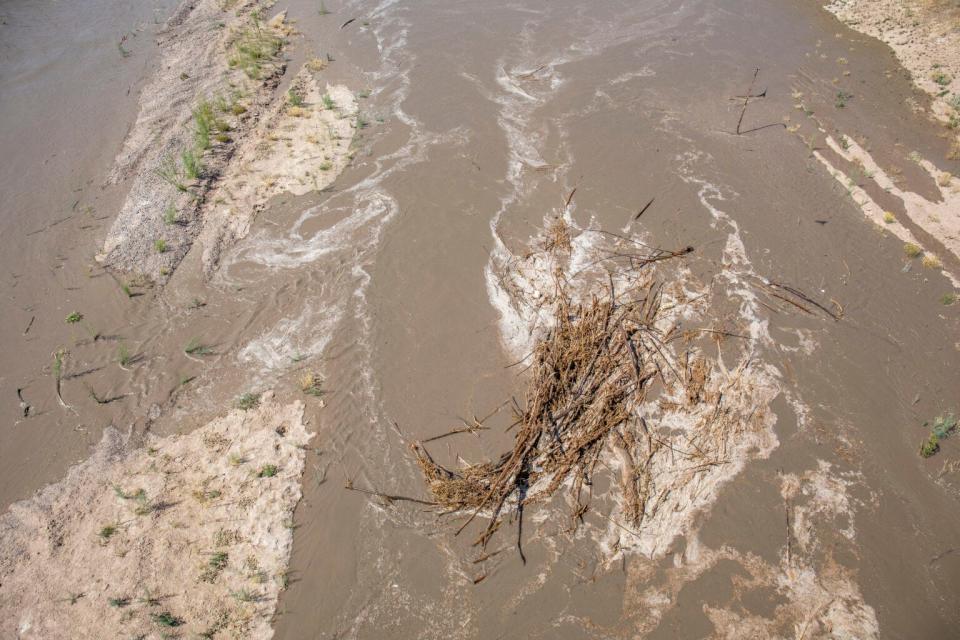
Salt on the wound
Less water is one concern. Bad water is another.
The Rio Grande at El Paso is increasingly salty, as the flows from wastewater treatment plants and salts from fields upstream wash downriver. At the New Mexico and Texas border, brackish water pushes its way up from below ground.
Salt levels are about seven times higher in El Paso compared with the headwaters in Colorado, and the brackishness poses a threat to crops here, said Ganjegunte, the professor who studies the county’s fields at Texas A&M.
When Ganjegunte started his research on the test fields at the extension’s office in eastern El Paso, much of the surrounding area was farmland. Now, orange barrels line the streets, scaffolding surrounds shells of commercial buildings, and a strip mall hosting a Domino’s pizza sits kitty-corner to the nondescript research building.
In his office at the laboratory, Ganjegunte, wearing dark glasses in a crisp button-down and black slacks, rolls up his sleeves as he dives into soil sciences. His recent research found climate change is poised to salt more of the Earth.
Field studies show Rio Grande salt levels could double in 50 years, even as the water reduces. Those findings were detailed in a five-year study co-authored with researchers from University of Texas El Paso, as well as Arizona, Oklahoma, New Mexico and Ciudad Juárez. Farmers would lose out on as much as 40% of freshwater from the river. It could render land “unfit for production,” he said.
“For the overall economic well-being of the El Paso region, we need to manage salinity,” he said.
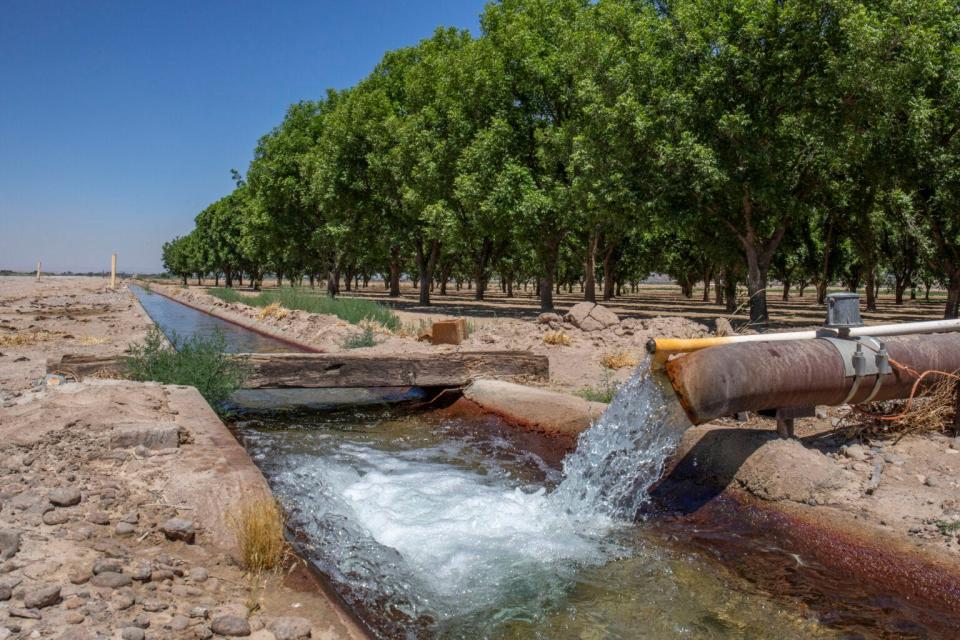
Climate change’s hotter and drier conditions would mean more evaporation leaving behind saltier water, Ganjegunte pointed out, and less snowmelt to dilute downstream.
Not all salts are equal. Some don’t affect plants. Some can provide nutrients. But sodium chloride — that’s table salt — is toxic to pecans. Salt also destroys the “glue” of organic compounds that hold soil together, changing how water soaks into the ground and the chemical process for plants to get nutrients from the earth.
Soil is degraded by over-cultivation. But other than erosion, “the most significant form of degradation is in salinity,” Ganjegunte said.
Farmers may have to move away from growing pecans and alfalfa, which are salt-sensitive, he said, but “that’s easier said than done,” since pecan trees require years of water and maintenance to produce a crop.
Cotton is relatively salt-tolerant, but in drought, farmers might not have enough water early in the season to plant it. Early season flows are increasingly sporadic.
Ganjegunte urged urban and rural communities to take salinity and soil health seriously. Degraded soils pose flood risks to homes, and he pointed to city parks that have been harmed by salted floodwaters. The long-term solution for salts is working to manage it with salt-tolerant crops, chemical treatments and accepting it — not flushing it — downstream.
“Whatever we pass on becomes a headache for Hudspeth County; whatever Las Cruces washes off becomes our headache,” he said. “We need to limit that kind of water. We have to somehow make it useful for agriculture.”
Danielle Prokop is a freelance reporter based in the Borderlands. This project was funded by a grant from the Water Desk and by States Newsroom, a network of nonprofit news organizations and home to Source NM.
Others are reading:
In drought-plagued New Mexico, a city loses nearly half its water - to leaky pipes
Rescuing silvery minnows like ‘slapping a Band-Aid on a severed limb’
This article originally appeared on Las Cruces Sun-News: Salted earth at the tail of the Rio Grande’s snowmelt

